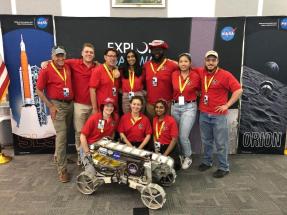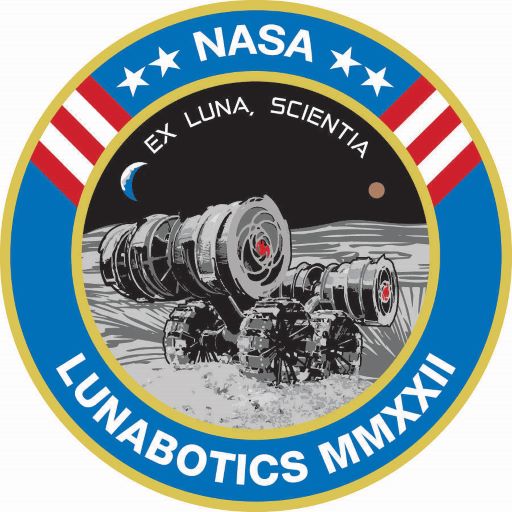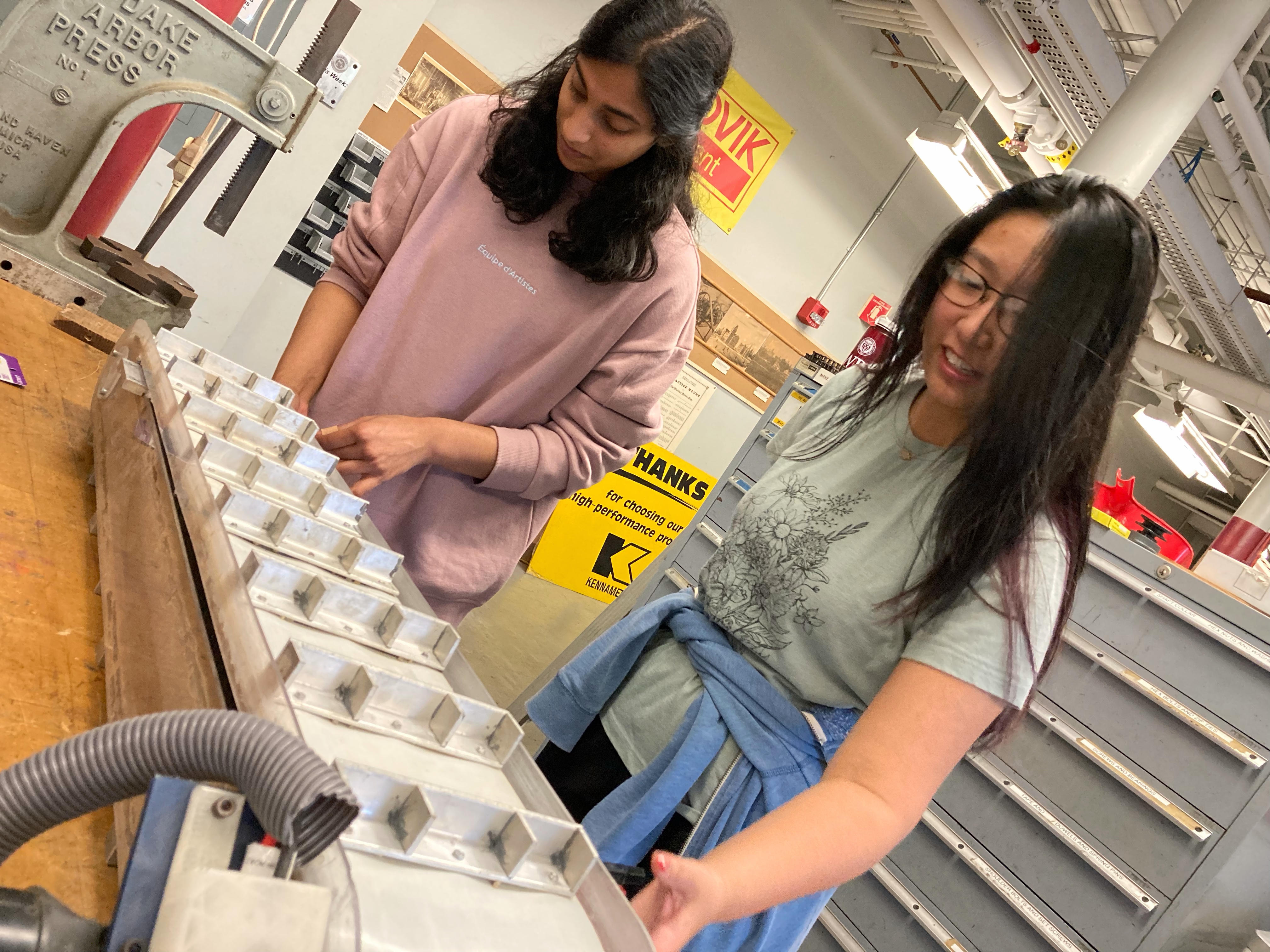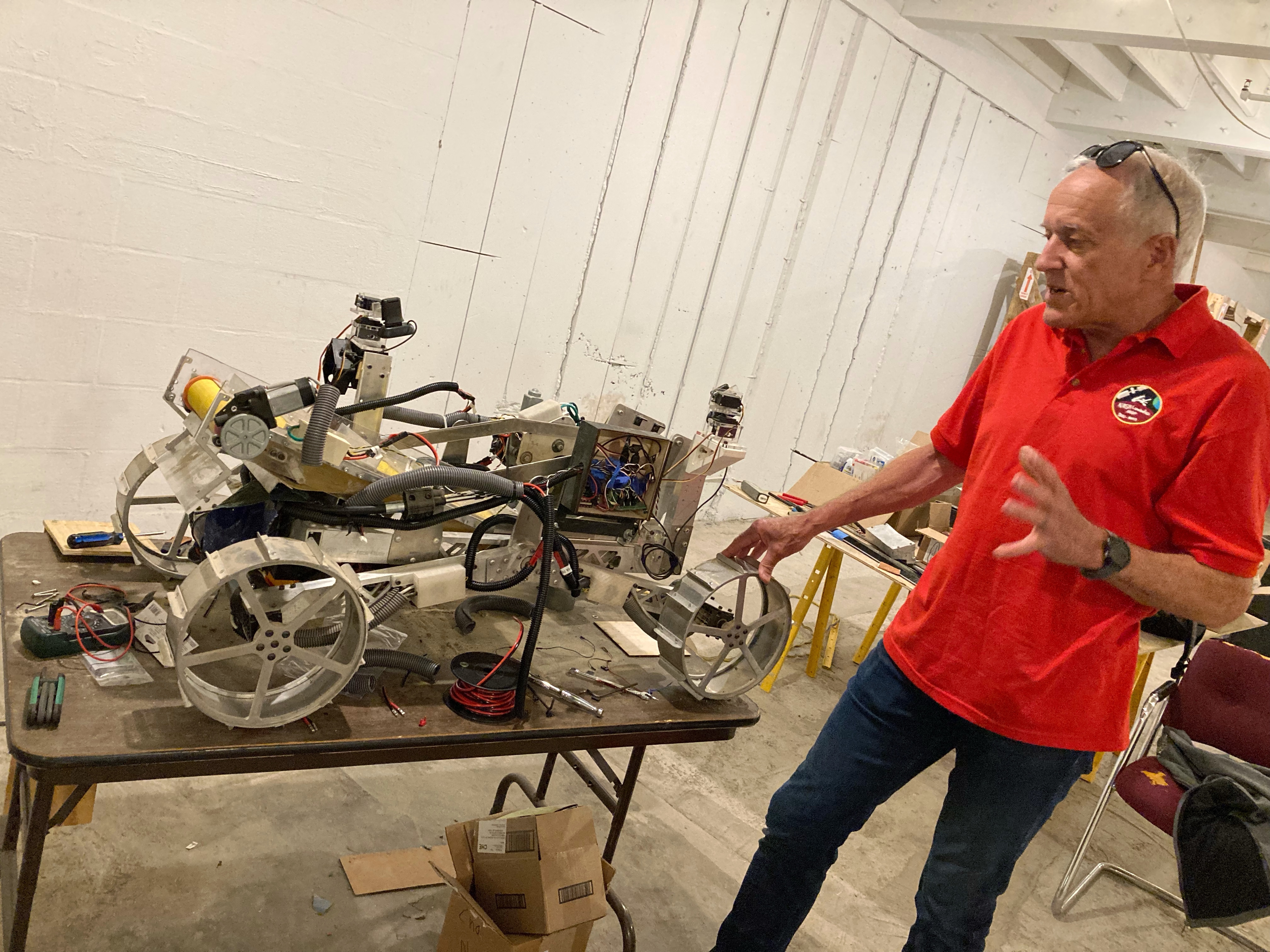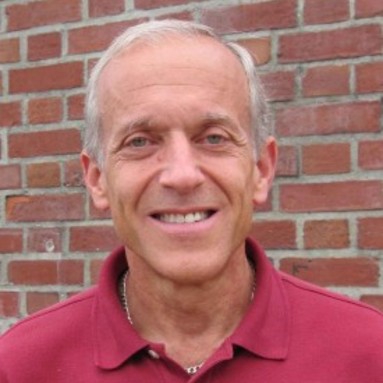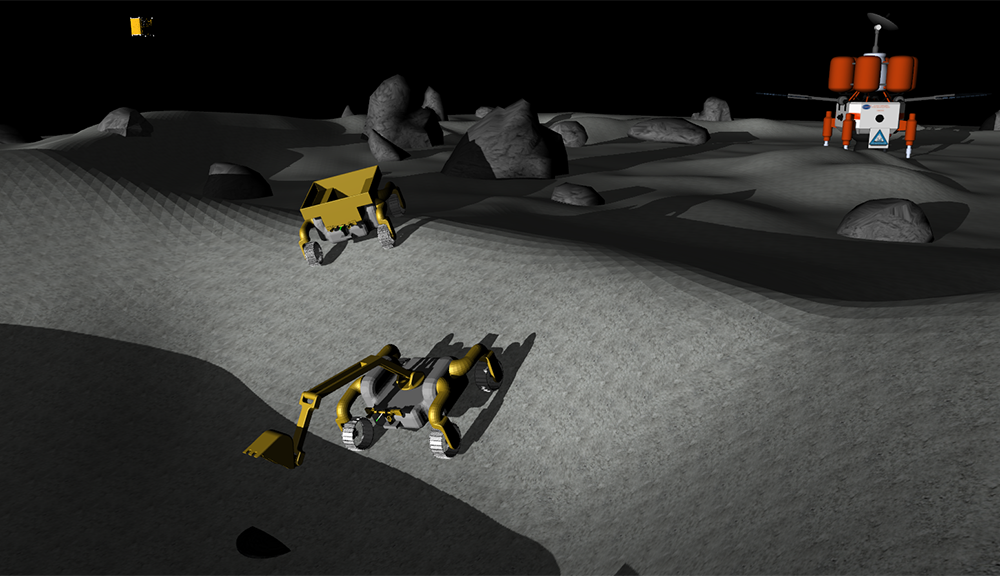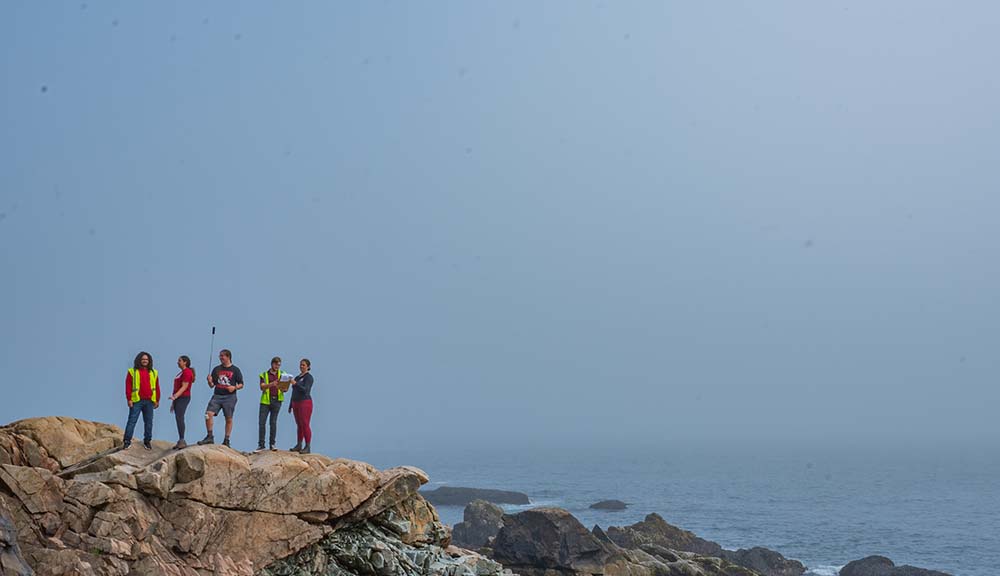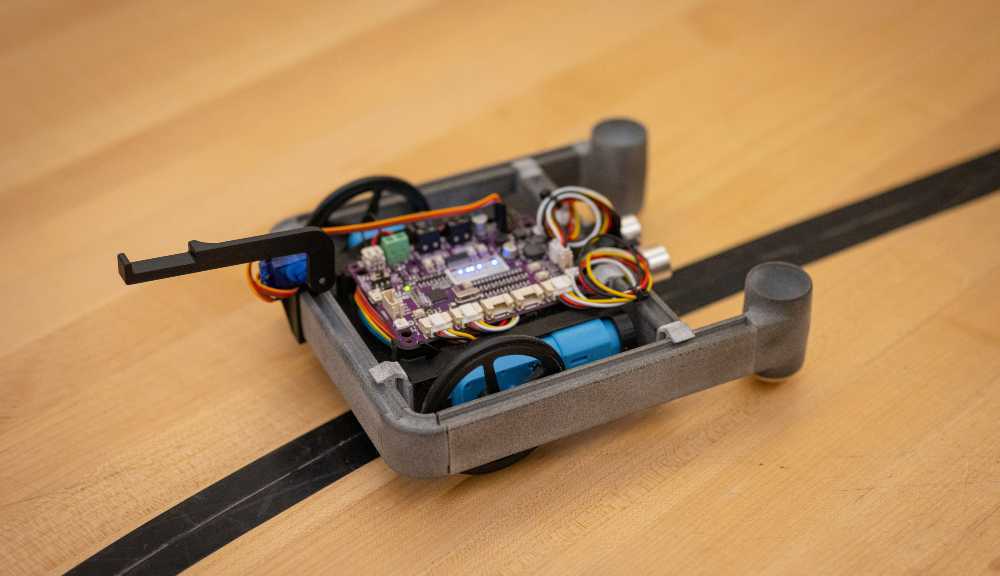The team’s participation this week adds to a rich history of robotics competition at WPI. In 2009 a WPI-sponsored team led by Paul Ventimiglia ’12 won an earlier version of the regolith challenge and $500,000. Other WPI teams have regularly competed in DARPA robotics challenges.
Stafford explained that in earlier Lunabotics challenges, teams were only required to develop robots that could mine the top layers of the Moon’s surface. But teams are now required to dig a little deeper, at least 30 centimeters, into a layer of limestone gravel that simulates the “icy-regolith” buried in the South Polar region of the Moon, according to NASA.
That might not sound like much of a stretch, but the new parameters present new problems: the simulated icy rock is hard-packed, unlike the sandy upper layers, Stafford said, which puts more stress on the small motors that drive the robot’s digger.
Other challenges add degrees of difficulty to the competition: the robot must navigate to a sieve to separate the sand and gravel it has scooped up; it also has to fold back up for transport. And while the mining challenge is one thing, getting to and from the dig site is another: the Lunabotics competition includes large obstacles and rough terrain in the large pit that the team must navigate, using a mix of autonomous operation and remote control.
The WPI team developed innovative solutions to these challenges as they built the robot. For example, they equipped it with two cameras for better user navigation and gave the robot a system of pivots, rockers, and cables that ensure all four wheels are always on the ground.
Nikita Jagdish ’22 said she was proud of what her team accomplished in a somewhat compressed timeframe. The team spent so much time together they became good friends, which in turn made it easier for them to work together. And drawing from several areas of study created a team in which everyone had something to contribute.
“Over time we learned what everyone was good at,” Jagdish said.
She said having half the team—and more than half of the travel team—made up of women was not something she found particularly noticeable, and as a woman she never felt sidelined.
“It is exciting to see so many women and people of different backgrounds getting interested in robotics,” she said.
The Lunabotics team at WPI includes representation from computer science, robotics engineering, mechanical engineering, electrical engineering, and industrial engineering. Stafford, along with Professors Therese Smith, Joshua Cuneo, Yarkin Doroz, and Walter Towner, advised the team, which included 14 students, nine of whom will make the trip to NASA this week. In addition to Hou, Jagdish, and Chava, Corinne Hartman, Tyreese James, Nathan Ng, Thomas Sterrett, Jacob Yurcak (all from the Class of '22), and Julia Sheats ‘23 will compete. Recent graduates Jesulona Akinyele, Peyton Grant, Sarah McCarthy, Michael Rossetti, and Jacob Parker also worked on the MQP this year.
